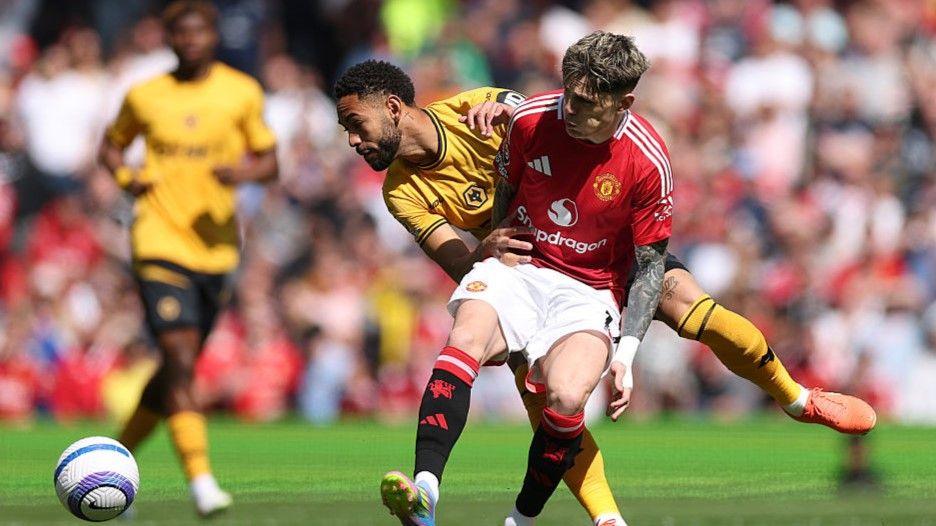News And PoliticsCommunications And EntertainmentSports And FitnessHealth And LifestyleOthersGeneralWorldnewsBusiness And MoneyNigerianewsRelationship And MarriageStories And PoemsArts And EducationScience And TechnologyCelebrityEntertainmentMotivationalsReligion And PrinciplesNewsFood And KitchenHealthPersonal Care And BeautySportsBusinessFamily And HolidaysStoriesIT And Computer ScienceRelationshipsLawLifestyleComedyReligionLifetipsEducationMotivationAgriculturePoliticsAnnouncementUSMLE And MedicalsMoneyEngineeringPoemsSocial SciencesHistoryFoodGive AidBeautyMarriageQuestions And AnswersHobbies And HandiworksVehicles And MobilityTechnologyFamilyPrinciplesNatureQuotesFashionAdvertisementChildrenKitchenGive HelpArtsWomenSpiritualityQuestions AnsweredAnimalsHerbal MedicineSciencePersonal CareFitnessTravelSecurityOpinionMedicineHome RemedyMenReviewsHobbiesGiveawayHolidaysUsmleVehiclesHandiworksHalloweenQ&A
Top Recent
Loading...
You are not following any account(s)
dataDp/1032.jpeg
Worldnews

LIVE: Real Madrid Vs Atletico Madrid UEFA Champions League
~0.2 mins read
Follow the build-up and live text commentary as Real Madrid face Atletico in the last 16 of football’s Champions League. Follow Al Jazeera English:...
Read this story on Aljazeera
dataDp/9958.jpeg
P7as2

Khloe Kardashian Comes Clean About Every Cosmetic Procedure, And Fans Are Applauding Her Honesty
~3.2 mins read
The Kardashian-Jenner family has long been at the forefront of global beauty trends. From their ever-evolving appearances to the endless speculation about plastic surgery, they’ve shaped and sometimes redefined beauty standards over the last decade. But now, in 2025, there’s a noticeable shift in how they talk about it. After Kylie Jenner recently opened up about her boob job in a refreshingly honest way, it’s Khloe Kardashian who’s now stepping up with complete transparency. And fans are loving every bit of her unfiltered honesty. The Kardashian-Jenner impact on beauty has been massive; think fuller lips, snatched waistlines, lifted cheeks, and contoured features. For years, rumors and assumptions flew around about how much of their beauty was natural and how much was enhanced. But in today’s age of authenticity, Khloe is changing the game by revealing everything herself. It all began when Dr. Jonny Betteridge, a London-based aesthetics expert and viral content creator, shared a professional video breakdown of Khloe’s changing appearance. With a respectful tone, he suggested she may have undergone several cosmetic procedures, including a brow lift, rhinoplasty, lip fillers, a chin implant, and even a face and neck lift. He pointed out technical markers like a reshaped hairline and adjusted earlobes, praising her look while supporting his claims with professional reasoning. Instead of brushing it off or denying it, Khloe took to the comments section to respond. “I take this as a great compliment!” the 41-year-old wrote before listing in detail all the cosmetic procedures she’s actually had. Khloe began with what she’s already spoken about in the past: a nose job, followed by laser hair removal for her hairline and body. She then discussed her injectables, stating she’s had both Botox and Sculptra. The latter was used in her cheek area after she had a tumor removed in 2022 due to skin cancer. As for fillers, she admitted to using them years ago but said she hasn’t gotten any in recent times, though she acknowledged that filler doesn’t fully dissolve and likely still exists in a milder form under her skin. She denied having a surgical face or neck lift but shared that she did get collagen baby threads inserted under her chin and neck, a non-surgical treatment that helps lift sagging skin and boosts collagen production. Khloe’s attitude throughout was confident and clear—no shame, no secrets. She was honest about not going for surgery yet but not ruling it out in the future. She also spoke about receiving Sofwave laser treatments, a non-surgical ultrasound-based skin-tightening technology that she attributes to looking youthful. Such treatments, combined with her injectables, allow her to steer clear of more aggressive procedures, at least for the time being. Beyond high-tech treatments, Khloe puts a strong emphasis on regular skincare. She revealed that she gets frequent facials, including the trending and bizarre-sounding salmon sperm facial, which uses fragments of salmon DNA and RNA for rejuvenation. She supports her regimen with peptides, vitamins, and daily skincare routines. It’s a reminder that although cosmetic surgery enhances, actual results also result from long-term dedication to the practice of self-care. With all the chatter about fillers and facials, Khloe also established that one of the most significant contributors to her transformation has been her 80-pound weight loss throughout the years. She credited the results to “slow and steady” progress with the guidance of her longtime fitness trainer, Joel “Coach Joe” Bouraïma. It’s this change, she said, that contributed most significantly to her overall look. Khloe’s openness mirrors that of her younger sister, Kylie, who recently broke the internet by sharing exact details of her boob job, even giving out her surgeon’s credentials. Kylie’s in-your-face candor paved the way for a new type of celebrity candor, one based on self-hood and candor as opposed to denial. Now, Khloe is picking up that baton and carrying it on, deciding to engage instead of avoid the topic. And fans are cheering the change. Khloe ended her comment with a strong line: In 2025 there are so many other things we can do before surgery, but when it’s time, and if I choose to, I know some great doctors. In a world that’s more and more saying “her body, her rules,” Khloe’s candor is refreshing as well as empowering. Whether through natural weight loss, cosmetic tweaks, or high-end skincare, she’s proving that transformation, physical or otherwise, is deeply personal. And more importantly, she’s showing that confidence and self-awareness will always be the most powerful glow-up of all.
Read this and Other similar stories at MissMalini.com
dataDp/3575.jpeg
Futbol

~2.8 mins read
Struggling Manchester United returned to type as Pablo Sarabia curled home a brilliant 77th-minute free-kick to secure a fifth straight top-flight win for Wolves for the first time since 1970 and end any lingering fears of relegation. United's performance could not have been in greater contrast to their thrilling efforts in midweek against Lyon. They have now lost 15 games this season, more than last term and their worst since 1989-90, when they lost on 16 occasions. Ruben Amorim's team can now add Wolves to Crystal Palace, Brighton, Bournemouth, Newcastle and Nottingham Forest as teams that have come to Old Trafford since the Portuguese took charge in November and left with maximum points. United have now taken nine points from their past 10 Premier League games. The only teams they have beaten in that period are Leicester and Ipswich, who are both in the bottom three. Rasmus Hojlund was inches away from turning home Alejandro Garnacho's low cross at the far post for the hosts but he has now scored once in his last 28 games. While Amorim has not made United's results better since replacing Erik ten Hag, Vitor Pereira has transformed Wolves. From being in a relegation dogfight for much of the campaign, they are now safe with five games to spare and are behind today's opponents only on goal difference. It really did not need spelling out but everyone connected with Manchester United knows winning the Europa League is the only thing standing between them and a catastrophic campaign, the like of which it was impossible to imagine in the financially driven Premier League era. Even last season, when they finished eighth, was better than this. There were elements of positivity, which chiefly came through the mature performances of youngsters Harry Amass and, on his debut, 20-year-old central defender Tyler Fredricson. But really, a largely drab encounter, in which the home side had just two shots on target, just emphasised that aside from skipper Bruno Fernandes, who was left on the bench for the first hour as Amorim focuses on the Europa League semi-final with Athletic Bilbao, United badly lack a creative spark. Dan Bentley did tip a first-half Christian Eriksen free-kick over the bar but there never seemed likely to be a repeat of the late heroics against Lyon. Teenage forward Chido Obi came on for Hojlund towards the end but the youngster never threatened either and Fernandes screwed a good opportunity wide from Garnacho's cut-back. And, as United have significant issues on the pitch, there is a great sense of unease off it as well. There were no significant protests arranged by the more militant supporter groups. But right in front of the directors box the fans, many of whom have had season tickets for decades, continued to make their feelings known about their pending relocation to create a new corporate seating area. Banners including blunt messages like 'tourists over fans' and more detailed ones, accusing owners Sir Jim Ratcliffe and the Glazer family of letting supporters down, were raised barely 10 yards away from chief executive Omar Berrada and chief operating officer Collette Roche as they took their seats in the directors box. Wolves' fourth away league win in a row was a masterclass in containment, and striking when the opportunity arose. Pereira has drilled his defenders to perform in a cohesive manner in a way predecessor Gary O'Neil could not. While it could be argued Wolves' squad is better than it appeared under O'Neil, especially in the latter weeks of his reign, it is a measure of the impact Pereira has had that they kept an admittedly weak United side at arms' length with relative ease. For once, Matheus Cunha was a subdued presence, so it was Sarabia who stepped up to take the pivotal free-kick conceded by Eriksen close to the United box. Andre Onana thought he had got his wall right. But Sarabia spotted an opportunity and, just three minutes after his introduction, scored the goal that secured Wolves' Premier League safety.
All thanks to BBC Sport
profile/5170OIG3.jpeg.webp
Healthwatch

What Is Prostatitis And How Is It Treated?
~3.5 mins read
Prostatitis can cause painful or uncomfortable symptoms, but various types of treatment can help.


Prostatitis, or inflammation of the prostate, is more common than you might think — it accounts for roughly two million doctor visits every year. The troubling symptoms include burning or painful urination, an urgent need to go (especially at night), painful ejaculations, and also pain in the lower back and perineum (the space between the scrotum and anus).
Prostatitis overview
There are four general categories of prostatitis:
Acute bacterial prostatitis comes on suddenly and is often caused by infections with bacteria such as Escherichia coli that normally live in the colon. Men can suffer muscle aches, fever, and blood in semen or urine, as well as urogenital symptoms. Acute inflammation can cause the prostate to swell and block urinary outflow from the bladder. A complete blockage is a medical emergency that requires immediate treatment. Depending on symptom severity, hospitalization may be necessary.
Chronic bacterial prostatitis results from milder infections that sometimes linger for months. It occurs more often in older men and the symptoms typically wax and wane in severity, sometimes becoming barely noticeable.
Chronic nonbacterial prostatitis, also called chronic pelvic pain syndrome (CPPS), is the most common type. CPPS can be triggered by stress, urinary tract infections, or physical trauma causing inflammation or nerve damage in the genitourinary area. In some men, the cause is never identified. CPPS can affect the entire pelvic floor, meaning all the muscles, nerves, and tissues that support organs involved in bowel, bladder, and sexual functioning.
Asymptomatic inflammatory prostatitis is diagnosed when doctors detect white blood cells in prostate tissues or secretions in men being evaluated for other conditions. It generally requires no treatment.
Both acute and chronic bacterial prostatitis can cause blood levels of prostate-specific antigen (PSA) to spike. This can be alarming, since high PSA is also indicative of prostate cancer. But if a man has prostatitis, then that condition — and not prostate cancer — may very well be the reason for the rise in PSA.
Prostatitis treatments
Fortunately, research advances are leading to some encouraging developments for men suffering from this condition.
Antibiotics called fluoroquinolones are effective treatments for acute and chronic bacterial prostatitis. A four-to six-week course of the drugs typically does the trick. However, bacterial resistance to fluoroquinolones is a growing problem. An older drug called fosfomycin can help if other drugs stop working. PSA levels will decline with treatment, although that process may take three to six months.
CPPS is treated in other ways. Since it is not caused by a bacterial infection, CPPS will not respond to antibiotics. Medical treatments include nonsteroidal anti-inflammatory drugs such as ibuprofen, alpha blockers including tamsulosin (Flomax) that loosen tight muscles in the prostate and bladder neck, and drugs called PDEF inhibitors such as tadalafil (Cialis) that improve blood flow to the prostate.
Specialized types of physical therapy can provide some relief. One method called trigger point therapy, for instance, targets tender areas in muscles that tighten up and spasm. With another method called myofascial release, physical therapists can reduce tension in the connective tissues surrounding muscles and organs. Men should avoid Kegel exercises, however, which can tighten the pelvic floor and cause worsening symptoms.
Acupuncture has shown promise in clinical trials. One study published in 2023 showed significant improvements in CPPS symptoms lasting up to six months after the acupuncture treatments were finished. Mounting evidence suggest that CPPS should be treated with holistic strategies that also consider psychological factors.
Men with CPPS often suffer from depression, anxiety, and other mental health issues that can exacerbate pain perception. Techniques such as mindfulness and cognitive behavioral therapy for CPPS can help CPPS sufferers develop effective coping strategies.
Comment
"An accurate diagnosis is important given differences in how each of the four categories of prostatitis is treated," said Dr. Boris Gershman, a urologist at Beth Israel Deaconess Medical Center and assistant professor of surgery at Harvard Medical School. PSA should also be retested after treating bacterial forms of prostatitis, Dr. Gershman added, to ensure that the levels go back to normal. If the PSA stays elevated after antibiotic treatment, or if abnormal levels are detected in men with nonbacterial prostatitis, then the PSA "should be evaluated in accordance with standard diagnostic approaches," Dr. Gershman said.
Loading...
 Worldnews
Worldnews
 P7as2
P7as2
 Futbol
Futbol
 Healthwatch
Healthwatch